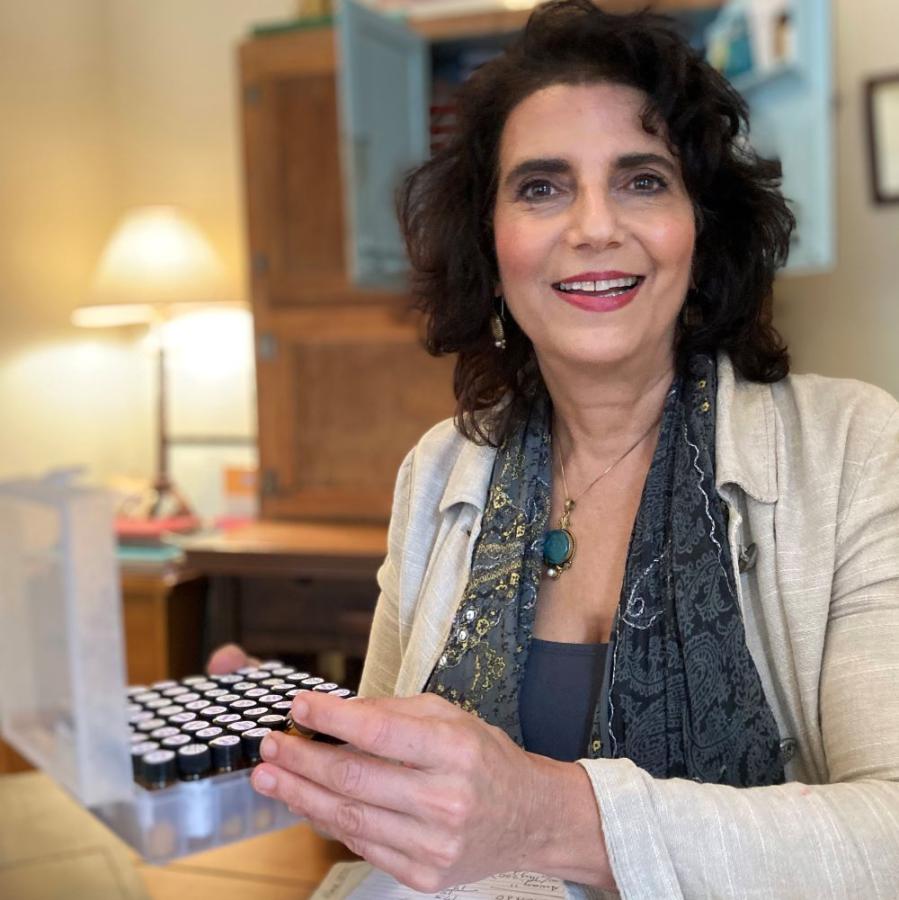
Our Woman of the Week is Laura Josephson, nominated for her work as a homeopath. She is also a trained iconographer. We asked her to tell you how she became an Orthodox person with a homeopathy practice and a company making and selling amazing skincare products:
“I grew up in a Jewish family. From a young age, I felt a vocation as an artist. I always looked to see between the lines, to uncover hidden things, and find connections between things. I was interested in archaeology and symbolism, and I was always drawing and painting and looking at how everything fits together. I made potions even as a young person, with a steady drive to create things and an interest in healing. As I got older, I wanted to find ways to blend art and science because I liked them both. I was also a spiritual seeker and felt there was something just beyond my grasp that was calling me. As a young adult, I was naturally attracted to icons, and enrolled in an iconography class with Vladislav Andreyev who at the time had just begun teaching at the School of Sacred Arts in New York City. I was quite taken with the whole process and studied with him for two years. Since you can't study iconography without learning some Orthodox theology, this was my real introduction to the Orthodox Church. I eventually broadened my reading and visited churches. I hadn't talked about Christ with anybody, but I felt inspired to read the New Testament and became very interested in Christian prayer. When I discovered the Lord's prayer, I thought it was magnificent because how could anybody argue with that? It seemed a profound, universal prayer to me. Another prayer that became pivotal to my daily journey toward the Church was Archimandrite Sophrony’s very beautiful Morning Prayer.
“Practicing homeopathy and creating a line of skincare products was a natural outgrowth of these creative impulses to bring things together, to find the interrelations between substances – like plants, minerals, and animal substances – finding ways that they can work in synergy together for healing. Similarly, when you’re painting an icon, you look for materials, forms, and colors that harmonize together. In fact, the pigments themselves have certain energies or qualities. Cobalt blue is different from, let's say, manganese blue. They have different energies, not just coloration in terms of what the eye sees, but different energetic properties as elements. When you're making an icon or anything else, you're participating in creation by having an encounter with the substances of the earth and bringing life to them in a way that gives glory to God – either as an icon or as a medicine that benefits someone’s healing.
“Broadly speaking, I work as a healer using primarily the model of homeopathy, finding the right remedy for someone, finding the right correspondence between a natural substance and what needs to be healed, and selecting that substance in nature which corresponds most closely to that person's unique imbalance in mind, body, and spirit. Those themes have buoyed me in life. Looking for the truth and spirit in all of these things, whether it's colors and pigments or remedies for people who are ill, or materials for skin care products, or even finding the right prayer for somebody that needs one. What are the words of my heart that are going to give the right resonance to that person and as an offering to God for the person that needs that prayer?”
Axia!
Laura Josephson is our Woman of the Week, nominated for her work as a homeopath and iconographer. You see her here selling her products at a craft fair, her icon of the Archangel Michael based on a Cypriot version, sketching an icon in her studio, and an early draft of an icon showing where the bole has been applied. We asked her to tell you something about substances that have meaning in both iconography and homeopathy:
“One of them is gold. We use it in homeopathy because it's a profoundly healing mineral and a light bearer. Its qualities are unchangeable. It shares some of the attributes of the sun, such as its coloration, brightness, warmth, and reflectiveness. In iconography, of course, we make halos with it to represent holiness. It's incorruptible, with a purity and nobility to it. It's also valuable, unlike tin or some other metals. So we use it to adorn the church. In homeopathy, we use it as a wonderful remedy for people who feel that they've lost their inner light, that they have fallen from some kind of height of success or pinnacle of value, who have lost their job, or who are depressed from a loss of love or purpose in their life. It reconnects them with the light that's given to them by God.
“There’s a wonderful pigment called cinnabar, a brilliant type of red which is also used medicinally in homeopathy. It’s made from mercury sulfide and is often used to treat people with inflammatory conditions, where there's heat and redness. It follows what we call the law of signatures, where we use certain substances for inflammatory conditions that produce redness of the tissues. Cinnabar is found in volcanic areas and near hot springs and is sometimes called “the blood of the earth.” You’ll see it used in ancient royal burial chambers in different civilizations, and it was applied mixed with tallow for body paint. Today it’s used medicinally to treat epilepsy, sore throats, arrhythmias, and asthma. It can also be helpful for people who have too much heat or fire in their chest, where it can calm things down.
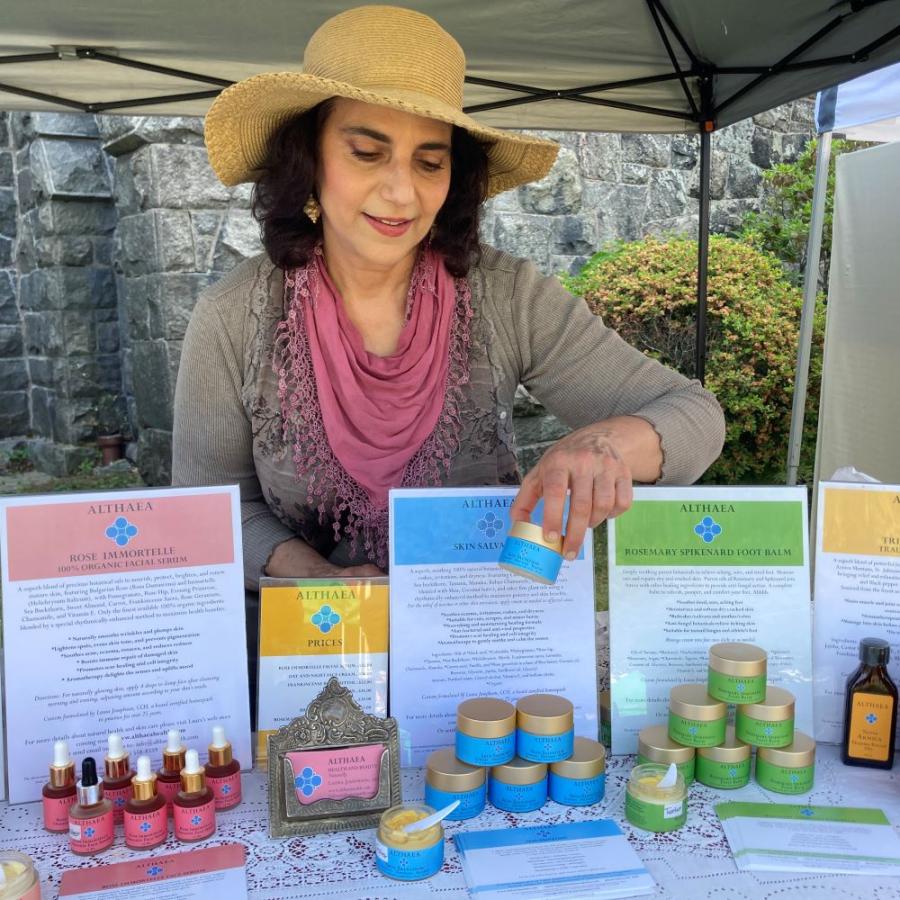
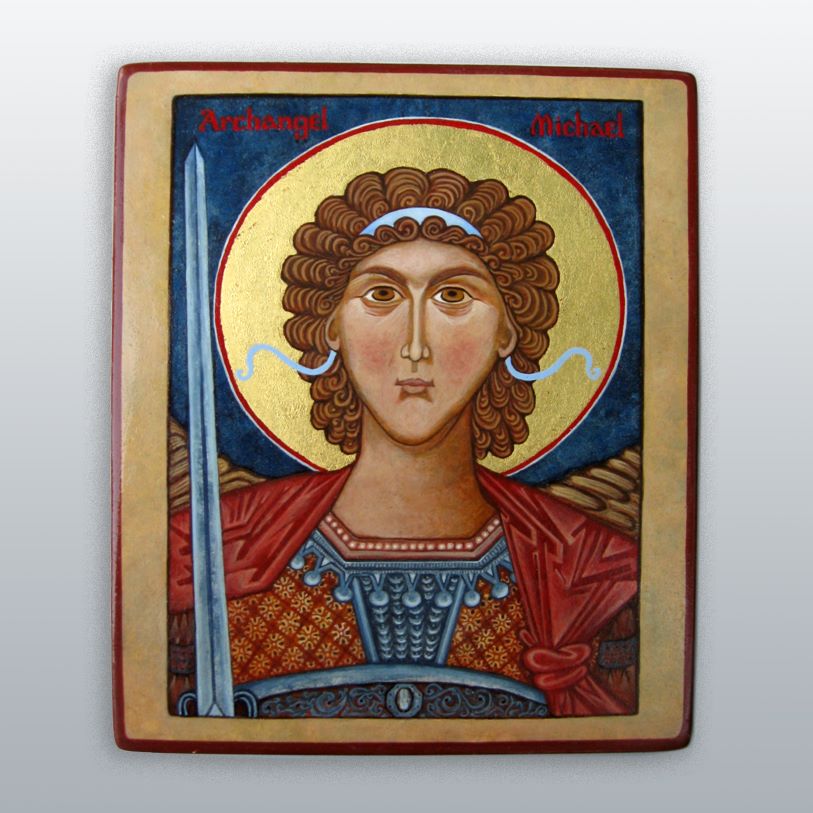
“A crucial part of making icons is preparing gesso, the foundation applied to the wood panel before gilding and painting. Even though it doesn't impart a color other than white, it's an important substance in that it’s primarily made from marble dust. Some modern icon painters use acrylic-based gesso. I use the traditional kind, made from marble dust, chalk, or calcium carbonate, which are the calcite deposits that occur naturally – such as those from Bologna, Italy, or Champagne, France, which are considered pure. The gesso is made by mixing a warmed emulsion of rabbit-skin glue and the calcium carbonate powder. After applying many layers to the panel and dried, the surface is then polished to look like a kind of fine porcelain, so that it has a smoothness and luster, and yet it's porous, so it actually absorbs the pigments in a way that helps to reflect colors back to the viewer's eye after the icon is finished. Then, the drawing of the image is done, followed by the gilding. Areas where gold will be applied are first painted with a finely milled red clay from Armenia called bole. Once the bole is set and dry, these areas are polished so that the gold when applied will be reflective and brilliant.
.“Calcium carbonate in gesso is crucial in providing stability and longevity to the icon. This substance is likewise an important medicine in homeopathy for greater stability and longevity, although we use a form of it gathered from the lining of an eggshell or oyster shell to make the medicine. Calcarea carbonica, as the remedy is called, is one of the most often used in homeopathy, especially for young people, babies, and children, for people who are experiencing a lot of rapid growth that has a lot to do with the metabolism of minerals that build up bone in the body, the lengthening of bones, the mineralization of the teeth and all these things. As a medicine, it can also provide stability to older people whose bones become more brittle as they age.
“Sepia is a remarkable homeopathic medicine which in its crude form is a dark yellowish-brown color used for outlining figures and borders in icons. It's made from the inky juice of the cuttlefish or squid. Many of the old masters, like Rembrandt, used to do a lot of their ink drawings on paper with it. Sepia can be prepared as a drawing ink or, as I use it, as a powdered pigment to be mixed with egg tempera to do line drawing with a brush, to make the outlines of the figures before laying down the colors. In homeopathy, it's prominently a women's remedy. It corresponds to the uterus, to the womb. It's a helpful medicine for different types of reproductive complaints or hormonal issues for women. It's been documented that certain Old Masters would dip their brushes in the ink and because they would repeatedly lick the brush to moisten it, they actually produced some female characteristics from too much exposure to sepia.
“Some pigments have arsenic in them, and we use several nano-forms of arsenic as safe healing agents in homeopathy. There's a yellow pigment called orpiment, which contains high amounts of arsenic, is quite poisonous to handle, and is therefore seldom used by painters nowadays. Arsenicum album is a great remedy for people with food poisoning or gastroenteritis, where there's a lot of vomiting and purging, accompanied by symptoms such as tremendous weakness, anxiety, and coldness. I won’t spoil The Name of the Rose for you, but arsenic shows up as a major plot point in that book. It also heals necrosis, which is the death of either tissue or bone. It's used as a cancer remedy. It's also used to treat anxiety where there's a fear of death that's quite strong. We call a remedy like this a “polychrest,” which means it heals many different things and can be used for a wide variety of ailments.
“Then we have pigments that contain lead. The standard for white paint was created from lead in the 4th century BC and was used worldwide up until the 19th century. It has all but disappeared from paint products because it's so toxic. Now most artists use zinc or titanium for white. All three of these – lead, zinc, and titanium – are used in micro-doses as safe and effective medicines in homeopathy today.
“Copper often makes a green color. There's a beautiful type of blue pigment called azurite which is a natural mineral from copper. In homeopathy, we use copper as an important remedy for cramps, seizures, spasms, and nervous disorders.
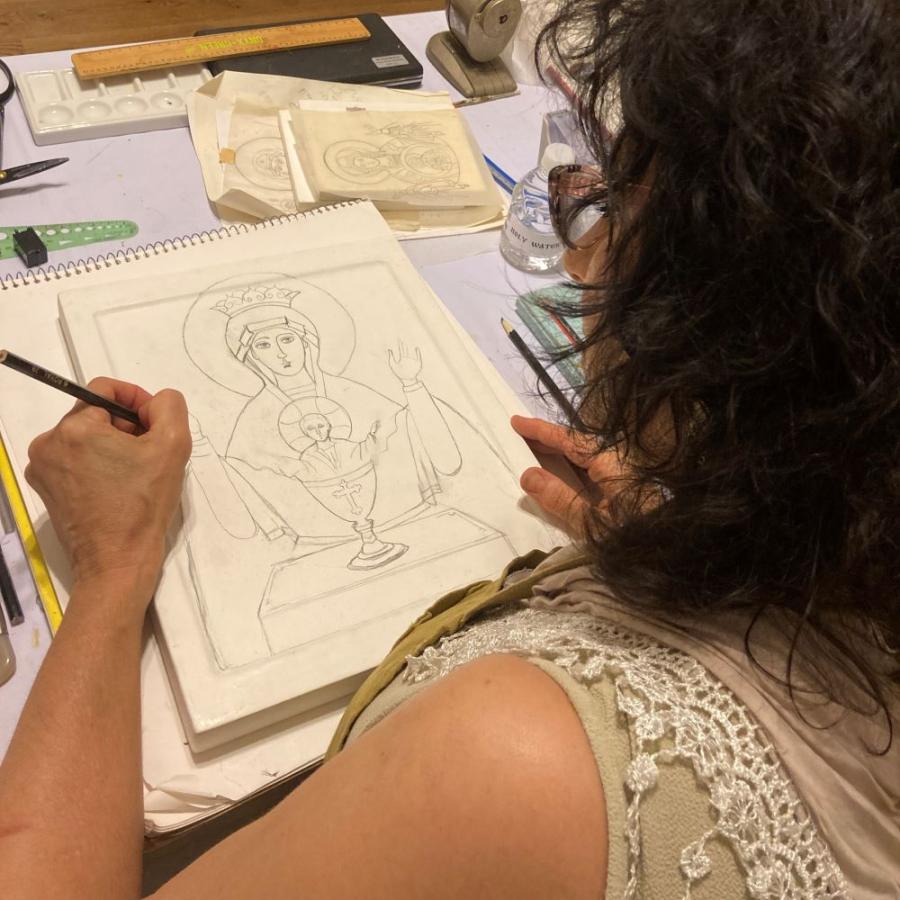
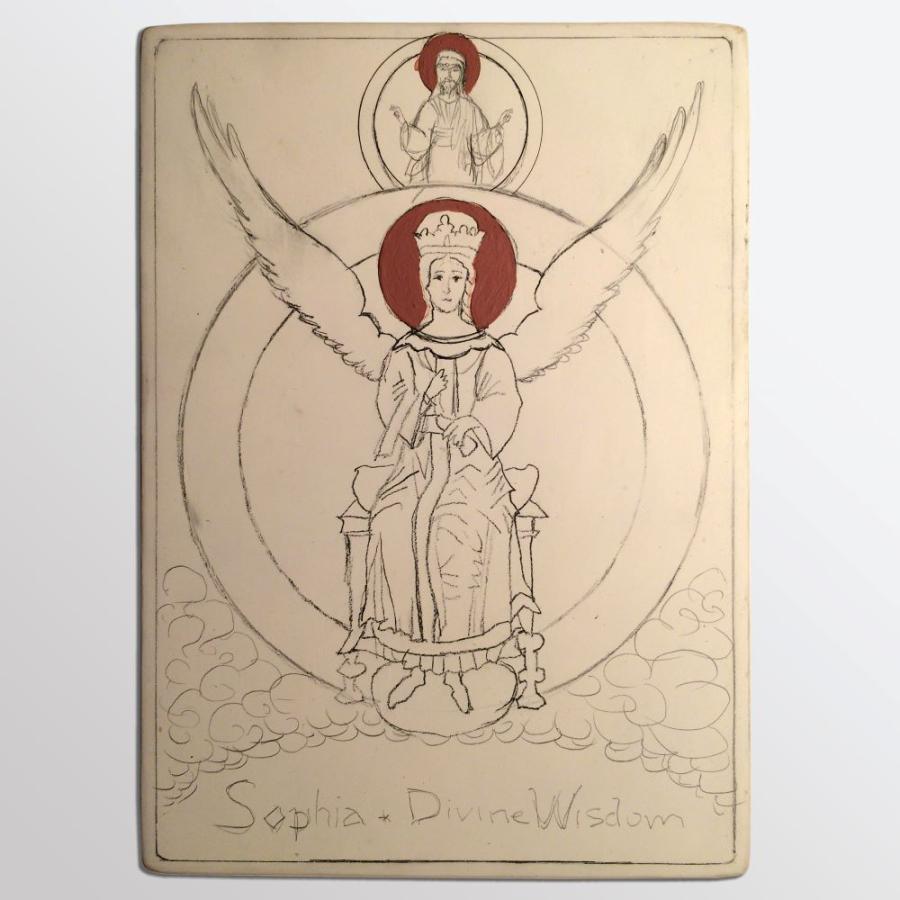
“The iron oxides produce a range of beautiful earth colors, different shades from robust reddish brown, to earthy orange, and yellow ochre. In homeopathy, the ferrous or iron-based remedies are often helpful in treating anemia (a lack of iron in the blood). The remedy Ferrum metallicum (pure iron) can help to correct anemia. The remedy Ferrum phosphoricum (phosphate of iron) is frequently used to ease fevers in their early stages.
“Last but not least, a plant-derived pigment which is also used as a medicine: Indigo. It has historically provided a deep and calming shade of blue for dying textiles and can be mixed with egg for tempera icon painting. As a remedy, Indigo has been used by herbalists traditionally as a drawing agent applied to poisonous spider bites; today, it is used in its homeopathic form to help people with ADHD and a variety of nervous disorders.
“Recognizing the interconnectedness of all living things fascinates me. How often do we not notice something that might be in our peripheral vision, yet if we did, we would have an “aha” moment about its beauty or the synchronicity between that thing and something else in our life? For instance, when we are in the presence of a rose, what is it about the flower that evokes a certain feeling? How different would that feeling be if it were an orchid or a lily? Why is that right? All living things have a relationship with us. We hardly take notice. I always try to remind myself to look for the interrelation between everything around us, ourselves as humans to one another. There is so much more to see, really. When Christ died on the cross, and gave himself for us, his being transformed the whole earth and permeated all of creation. So when we are participating, let's say, by painting with cinnabar, gilding with gold, or taking a remedy made from calcium carbonate, we're actually participating in a substance suffused with Christ’s energy. This inspires wonder in me. All human beings are connected to each other, not just through the natural world, but through our own being, through our words, through our deeds, and through spirit. We could even imagine that all of the things humans have endeavored to do and be throughout human history have become transformed through Christ, and as we continue to utilize and embody those things, we are partaking of Christ’s energies.”
As usual, we asked Laura Josephson, our Woman of the Week to tell you about her morning routine. You see her here with Olga Ptach, Olga Poloukhine, and Ksenia Lin (other members of her parish’s alto section), along with her icon corner::
“At seven, I wake up and usually start my prayers in bed. That is, I start with the prayer to the Holy Spirit, trisagion, and then stand to say the Lord's prayer. Then, as I start to move about, I'm actually praying for my children and other people who need my prayers. I have a little spot with my icons and could probably spend more time praying there, but that's my quick routine, and then it's on to the coffee. If the weather permits, I will take a walk before I have my morning coffee, so I’m outside to get some fresh air and get my circulation going a little.
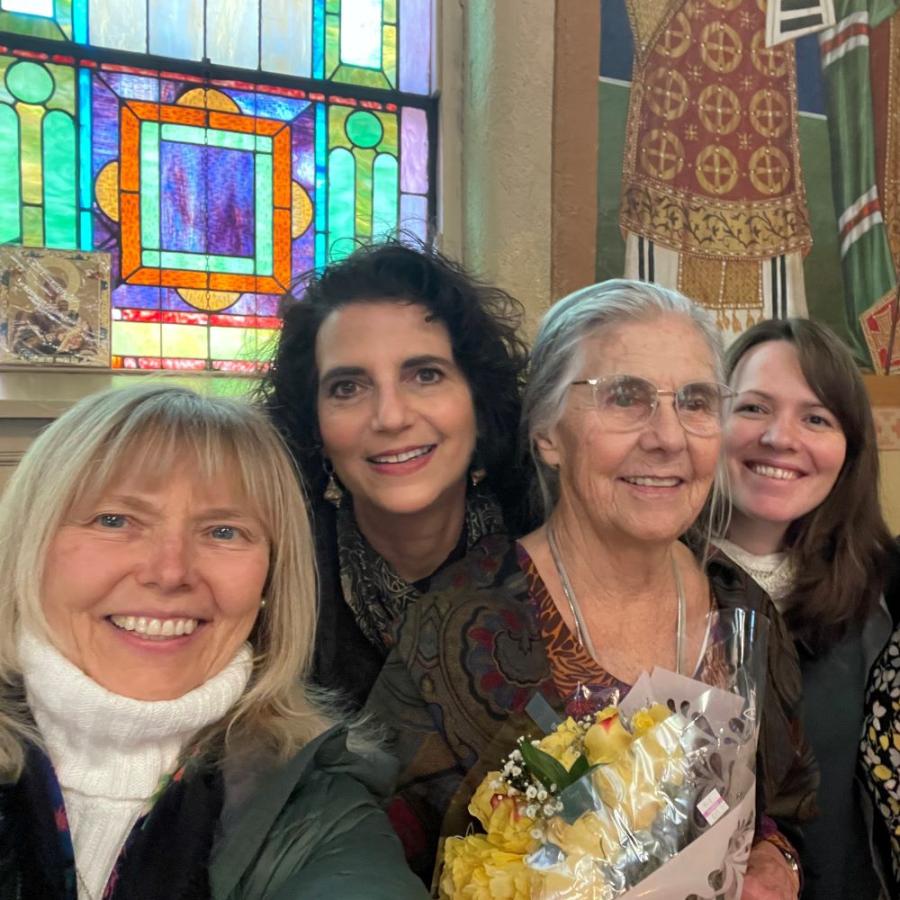
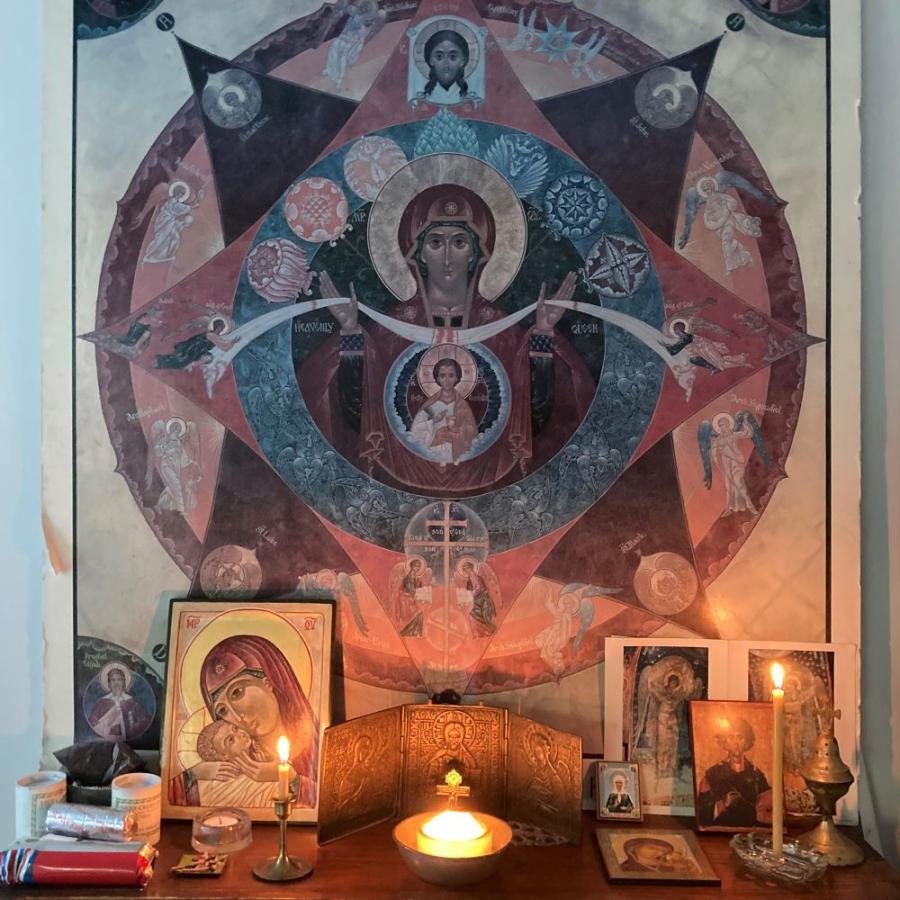
“My oldest daughter just had a baby girl last month and, during her pregnancy, I stepped up my prayer game by praying for her unborn child. It was a whole new experience for me to pray for somebody, especially my first grandchild, who had not yet been born. I could feel the being of this young person and it was truly wonderful! The fact that she is now here has continued to add a new and beautiful dimension to my prayer life for which I am very grateful.”
Thank you, Laura!


